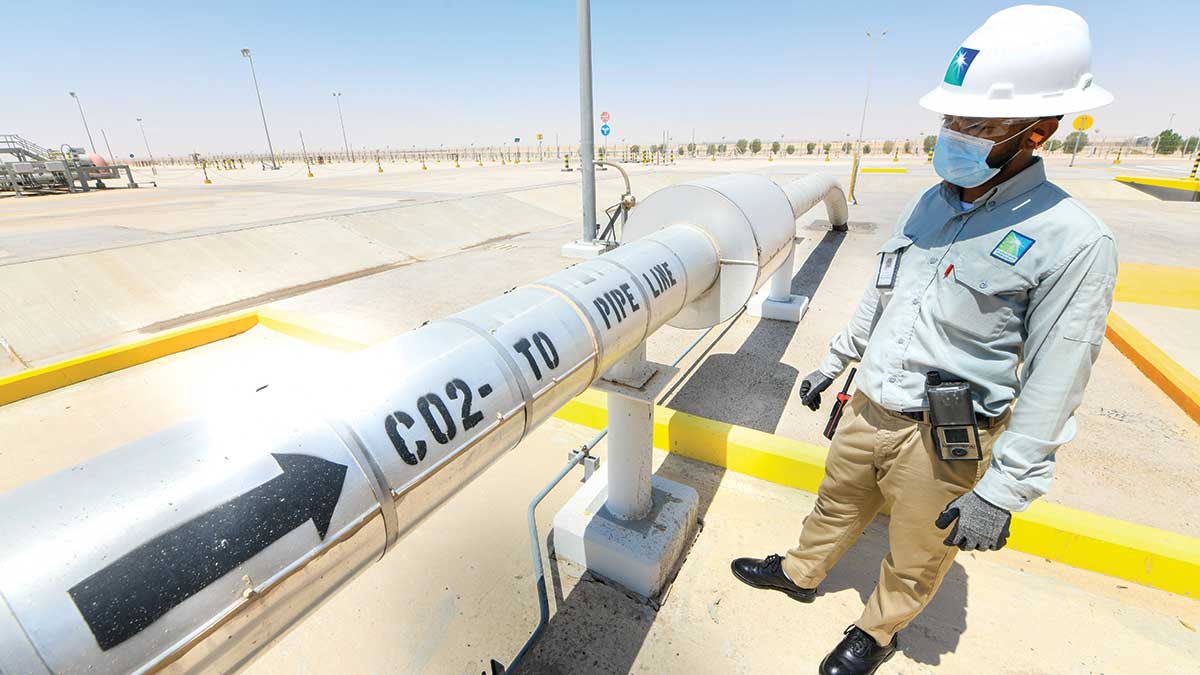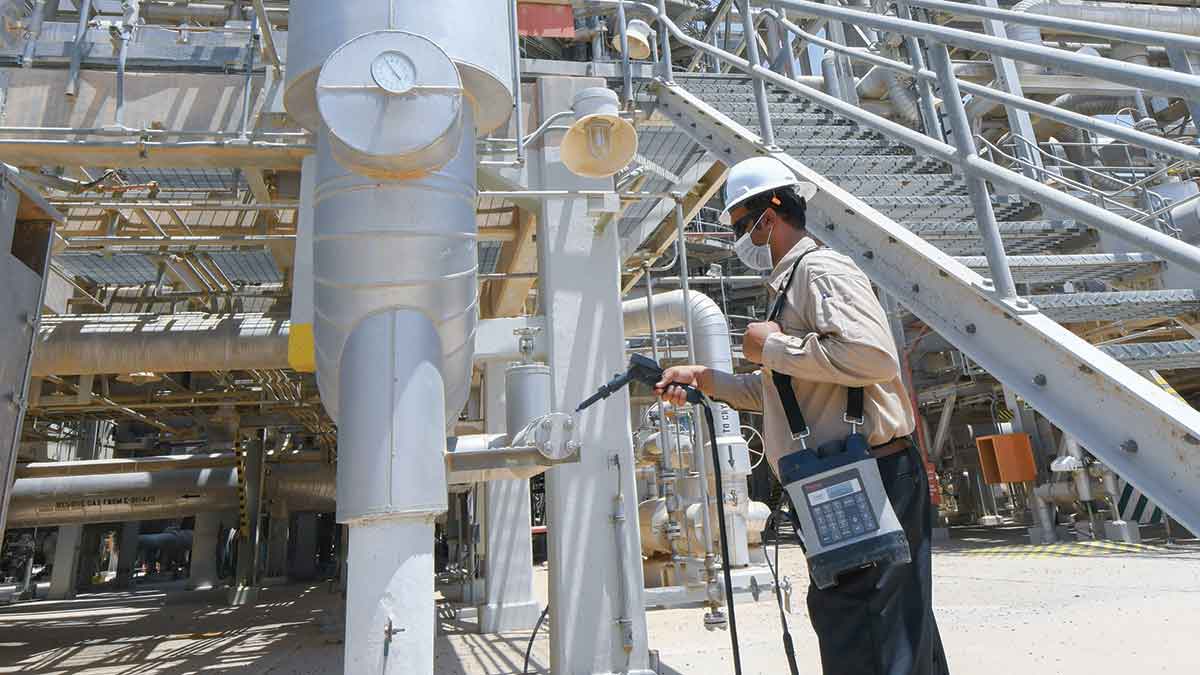CCUS
Making friends with our climate change adversary

Global November 17, 2021 - By
At Hawiyah NGL Plant, carbon capture, utilization, and storage efforts are a day-to-day mission.
Carbon dioxide (CO2) moves silently between our air, land, plants, animals, and people. Without CO2, natural life on Earth would not survive.
Global industrialization has dramatically increased greenhouse gases emitted into our atmosphere, and CO2, our life-sustaining friend, has also become our climate change adversary.
Carbon capture, utilization and storage (CCUS) is widely regarded as one of the primary ways toward managing the world’s excessive CO2 emissions.
CCUS captures CO2 at the source, and then compresses it.
After the CO2 is shrunk, it can be transported for long-term underground storage, or it can be recycled into a useful purpose by turning it into marketable industrial and commercial products.
Standing above the world’s largest discovered conventional onshore oil field, Ghawar, Hawiyah NGL plant operator Omar N. Almodrhim is four hours into his 8-hour day shift.
In front of him is the compressor for the Middle East’s most advanced large-scale CO2 capture and reinjection project.
Holding a clipboard, he diligently focuses on checking the machine’s 10 temperature gauges, carefully jotting down the readings. This is the second of four CO2 compressor checks he completes each shift.
Omar, who joined the Hawiyah NGL plant in 2012, witnessed the CO2 project’s construction in 2015, and the world’s rapid growing interest in it.
“The project provides better protection for the environment,” says Almodrhim. “Instead of routing CO2 to the thermal oxidizer, we put it back where it came from.”
“We have the capability to capture and process 45 million standard cubic feet of CO2 every day.”
CAPTION FOR TOP PHOTOGRAPH
Operator Omar N. Almodrhim works with Aramco’s CO2 capture and reinjection project at the Hawiyah NGL recovery plant, where CO2 has been returned underground since 2015.
In standard temperature and pressure, CO2 is a colorless gas, and compressing it transforms into a supercritical state.
After separating the CO2 from the gas, a Hawiyah internally geared compressor uses seven stages to compress the CO2.
At the fifth stage, the CO2 is routed to a gas dehydration unit, before being returned to the compressor for stages six and seven.
The final stage compresses the gas between 1,500 psi to 1,600 psi, then pipes it 85 kilometers in an 8-inch steel alloy pipeline to the ‘Uthmaniyah gas-oil separation plant 7, where a custom-built reinjection facility safely reinjects the CO2 back into the Ghawar oil field.
A sizable portion of the CO2 remains sequestered, while the remaining unlocks residual oil in the reservoir — a better option for enhanced oil recovery than water.

LDAR in action
Aramco’s flare gas recovery systems, asset integrity management, energy efficiency, and leak detection and repair programs (LDAR) help reduce its carbon footprint.
At the Hawiyah NGL plant, the LDAR program is applied regularly by a third party in accordance with U.S. EPA Method 21 of 40 CFR Part 60, while the site conducts its own annual survey, as well as checks after any test and inspection, or when equipment is opened.
Three 59-meter high demethanizer columns stand at the heart of the Hawiyah NGL plant, and mechanical inspector Abdullatif K. Al-Johar uses a toxic vapor analyzer to check for any fugitive volatile organic compounds, including methane and hazardous air pollutants at column B66-C-0310, which services the third NGL train.



